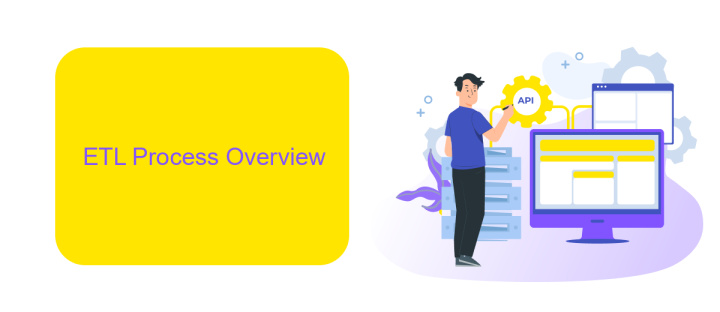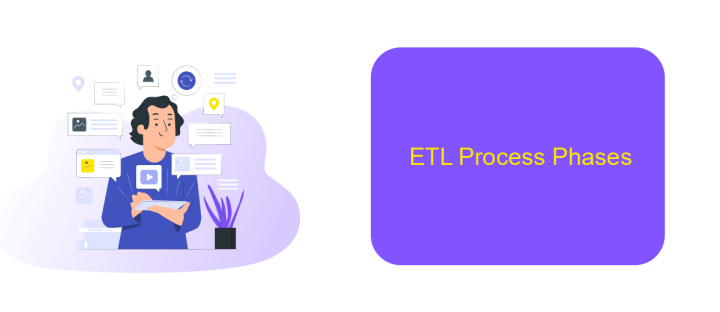ETL Process in Data Warehouse
The ETL (Extract, Transform, Load) process is a cornerstone of data warehousing, enabling organizations to efficiently consolidate and manage vast amounts of data from diverse sources. This article delves into the intricacies of ETL, exploring its critical role in data integration, the steps involved, and best practices to ensure data accuracy and reliability in a dynamic business environment.
Introduction
The ETL (Extract, Transform, Load) process is a critical component of data warehousing, enabling organizations to consolidate data from various sources into a single, coherent data store. This process ensures that data is accurate, consistent, and accessible for analysis and reporting. ETL processes are essential for making informed business decisions and gaining insights from large volumes of data.
- Extract: Data is collected from multiple sources, such as databases, APIs, and flat files.
- Transform: The extracted data is cleaned, formatted, and transformed to meet the requirements of the target data warehouse.
- Load: The transformed data is then loaded into the data warehouse for further analysis and reporting.
Modern ETL tools, like ApiX-Drive, simplify the integration process by providing automated workflows and seamless data transfer between various systems. ApiX-Drive allows businesses to connect different data sources effortlessly, ensuring that the ETL process is efficient and reliable. By leveraging such tools, organizations can streamline their data management processes and focus on deriving valuable insights from their data.
ETL Process Overview

The ETL (Extract, Transform, Load) process is a crucial component in data warehousing, enabling the efficient movement and transformation of data from various sources into a centralized repository. The process begins with the extraction phase, where data is collected from multiple heterogeneous sources such as databases, APIs, and flat files. This data is then transformed to ensure consistency and quality, involving tasks such as data cleaning, normalization, and enrichment. Finally, the transformed data is loaded into the data warehouse, making it available for analysis and reporting.
Modern ETL processes often leverage automation and integration tools to streamline operations and enhance accuracy. Services like ApiX-Drive facilitate seamless integration between different data sources and destinations, reducing the complexity of manual configurations. By using such tools, organizations can set up and manage their ETL workflows more efficiently, ensuring timely and reliable data availability. ApiX-Drive, for example, offers a user-friendly interface and robust features that support the automation of data transfers, making it an indispensable tool for optimizing the ETL process in data warehousing.
ETL Components

The ETL (Extract, Transform, Load) process is a critical component in data warehousing, enabling the seamless integration and processing of data from various sources. The primary goal of ETL is to ensure that data is accurately extracted, transformed into a suitable format, and loaded into the data warehouse for analysis and reporting.
- Extraction: This stage involves retrieving data from multiple sources, such as databases, APIs, and flat files. Tools like ApiX-Drive can simplify this process by automating data extraction from various services and applications.
- Transformation: In this phase, the extracted data is cleaned, normalized, and transformed to meet the requirements of the target data warehouse. This may include data validation, aggregation, and enrichment to ensure consistency and quality.
- Loading: The final step involves loading the transformed data into the data warehouse. This can be done in batch or real-time, depending on the use case and the capabilities of the data warehouse system.
Effective ETL processes are essential for maintaining data integrity and enabling accurate business intelligence. By leveraging tools like ApiX-Drive, organizations can streamline their ETL workflows, ensuring timely and reliable data integration across various platforms.
ETL Process Phases

The ETL process in a data warehouse involves three main phases: Extraction, Transformation, and Loading. Each phase plays a crucial role in ensuring that data is accurately and efficiently moved from source systems to the data warehouse.
During the Extraction phase, data is collected from various source systems such as databases, APIs, and flat files. This phase focuses on gathering raw data and ensuring its accessibility for further processing. Tools like ApiX-Drive can facilitate seamless integration with multiple data sources, simplifying the extraction process.
- Extraction: Collecting data from diverse sources.
- Transformation: Converting data into a suitable format.
- Loading: Inserting transformed data into the data warehouse.
The Transformation phase involves cleaning, filtering, and converting the extracted data into a format suitable for analysis. This step ensures data consistency and quality. Finally, in the Loading phase, the transformed data is loaded into the data warehouse, making it available for querying and reporting. Efficient ETL processes are critical for maintaining the integrity and usability of data in a data warehouse environment.


Conclusion
The ETL process is a crucial component in the architecture of data warehouses, enabling the efficient extraction, transformation, and loading of data from various sources. This process ensures that data is clean, consistent, and ready for analysis, providing businesses with valuable insights and supporting data-driven decision-making. Implementing an effective ETL strategy can significantly enhance the performance and reliability of a data warehouse.
In the context of modern data integration, tools like ApiX-Drive play a pivotal role in streamlining the ETL process. ApiX-Drive facilitates seamless integration between different data sources and applications, automating data workflows and reducing the manual effort required. By leveraging such services, organizations can achieve greater efficiency and accuracy in their data management processes, ultimately driving better business outcomes.
FAQ
What is an ETL process in a data warehouse?
Why is ETL important for data warehousing?
What are the main challenges in implementing an ETL process?
How can automation tools help in the ETL process?
What are some best practices for a successful ETL process?
Strive to take your business to the next level, achieve your goals faster and more efficiently? Apix-Drive is your reliable assistant for these tasks. An online service and application connector will help you automate key business processes and get rid of the routine. You and your employees will free up time for important core tasks. Try Apix-Drive features for free to see the effectiveness of the online connector for yourself.

